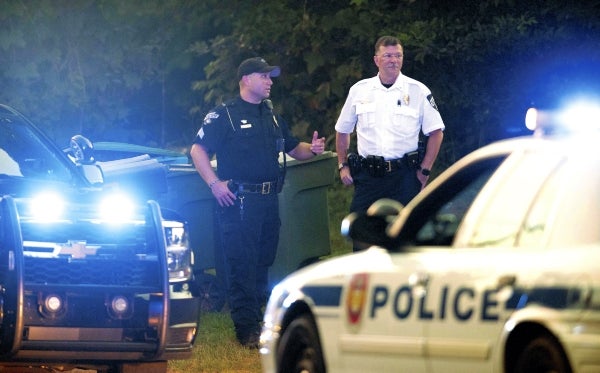Editorial: If New York can do it …
Published 12:00 am Tuesday, January 9, 2018

- Salisbury Police Sgt. A.L. Bouk, left, talks with Chief Jerry Stokes at the scene of a shooting on North Long Street. Jon C. Lakey/Salisbury Post
Salisbury is no New York City. But as local police, leaders and citizens work to make all Salisbury streets safe, they may be able to find inspiration in the Big Apple, whose name was once synonymous with crime.
The Wall Street Journal recently reported on a trend that hasn’t received a lot of press, nor comment from the president: “Big City Murders Drop to Historic Lows.” Though there was an uptick in 2015 and 2016, seven of the country’s biggest cities saw a drop in murders in 2017 — the continuation of a downward trend that started in the 1990s, the Journal reported.
The drop in New York has been most dramatic. From a high of 2,245 murders in 1990, the city saw only 290 in 2017. For a city of 8.5 million people, that’s astonishing. The Journal got its data from police and the FBI.
Though big cities at one time attacked crime with stop-and-frisk policing, experts said the gains were short-lived and even backfired; unwarranted searches sparked hostility. What has worked in the long haul sounds like smarter policing.
“Police in New York and Los Angeles say they have brought down murders with a more surgical approach than in the past,” the Journal story says. “Algorithms that map and predict crime are now used to deploy officers to hot spots. Police also zero in on the most violent offenders. At the same time, they also have focused on building relationships with residents.” The New York mayor gives great credit to community policing, close working relationships with the community, training and technology.
Some of those terms echo in comments made by Salisbury Police Chief Jerry Stokes and Assistant Chief Shon Barnes, especially community policing and building relationships. Salisbury Police are also taking a more data-driven approach, redirecting patrols to hot spots that show up on weekly crime tracking reports. This is not a city of millions — Salisbury has only about 34,000 residents — but crime does move around. Anecdotal evidence is no match for data.
The number of homicides in Salisbury remained steady from 2016 to 2017 — with 10 people losing their lives at the hands of others each year. Overall, though, violent and property crimes decreased, according to city police. And the city was more successful at making homicide arrests in the 2017, thanks to help from the Rowan County Sheriff’s Office and the State Bureau of Investigation. Meanwhile, Chief Stokes, who joined the force in mid-2016, is not forgetting the city’s unsolved homicides — eight from 2015 and 2016 alone.
If New York City got its annual murder count down from 2,245 to 290 in 27 years, it stands to reason that a city like Salisbury could reduce its homicide count, too. High crime numbers do not have to be a permanent fact of life for any city, big or small.


